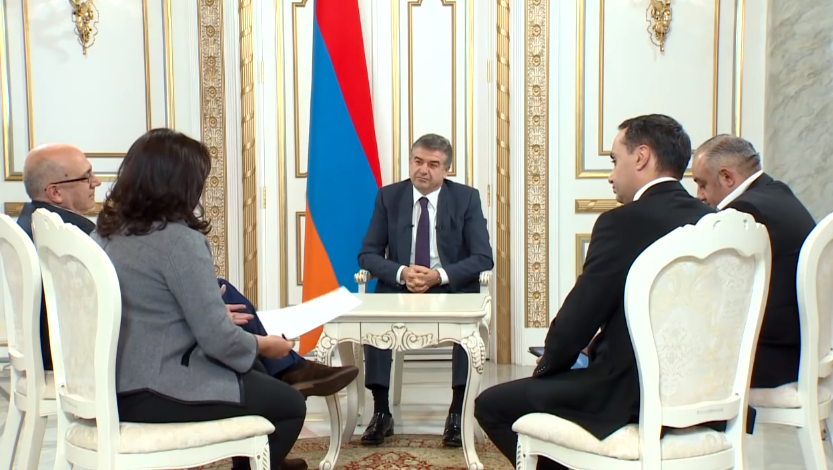On October 22 in the governmental building Armenia’s newly appointed Prime Minister Karen Karapetyan gave his first interview to journalists. The interview with the Prime Minister included Gevorg Altounyan of “Channel One”, Satik Seyranyan of “Armenia” television, Aram Abrahamyan of “Shant”, and Pedros Ghazaryan of “Kentron”. And that’s it.
For the Prime Minister, all of the media (or TV) was summarized in these TV stations, from 12 to 4. Other broadcasters, including “Yerkir Media”, “h2” and the country’s only news channel “ArmNews” were out of the picture. Online media was also out of the picture: online TVs and websites.
This choice in media clearly showed what type of media the Prime Minister considers to be primary, and in that type, the specific broadcasters. That choice also shows that in terms of the country’s changes and news, the Prime Minister has decided to adhere to traditional media, closed and with stereotypical models, not protecting the freshest approaches.
The tradition of ignoring online media
The tradition of underestimating the importance and significance of online media was brought out by President Serzh Sargsyan. Although during a variety of events he quickly answered questions from journalists from different media companies, with the major media meetings however, the President mainly invites TV stations.
This tradition was slightly breached in a press conference on the occasion of his first year in office and in 2013, when air broadcasters were interviewing the President and “Azatutyun” radio’s Armenia Director of Service Hrayr Tamrazyan was present. In 2015, however, meetings with Sargsyan again had no place for online media.
Why online media’s presence was important
Today throughout the entire world the roles of media players are being redistributed, and this, more than ever, applies to Armenia. Although the last time research on the media in Armenia was realized in 2013, with a “naked eye” it is possible to see that in our country this process has begun, the proportion of media consumption is changing. The TV has ceased to be the main communicating box of indisputable truths.
On the contrary, it is often associated with formal/promotional, refined/distorted and with the communication of incomplete information. And the main role of TV has been challenged by online media. It is challenged at different times and in different ways, but properly and successfully.
Online media is only becoming stronger and is attracting so many more consumers because it is democratic: faster, immediate, independent and convenient. That is the reason that media consumers look to the internet rather than the TV when important events occur in the country (#ElectricYerevan, #NKPeace, #ErebuniUprising). And online TVs and websites are recording unprecedented numbers of visits every time, thanks to live broadcasts and unedited footage. In the era of social media and smartphones, media consumers are expecting minimally mediated and real-time contact from their favored platforms.
Why it was necessary for Karen Karapetyan to have highlighted online media
Because Karen Karapetyan came into the position of Prime Minister under the image of reforms, a local superman, who does not have a magic wand, but emphasizes the importance of new approaches and is able to achieve changes. He is against corruption, money laundering and other harmful traditional practices.
And because during the National Assembly’s question and answer period on October 21, a person from the political parties said–while criticizing the government program–that the program’s targets and figures were not listed, and the Prime Minister cited international practice, countering that “in many countries figures are not listed in the government plans, they only say where they are qualitatively moving.” And media consumers expected the Prime Minister to be in contact with the media and guided by international practice: openly communicating with all types of media, not limited to numbers.
P.S. Ironically, the interview given by the TV station, while being broadcasted on TV, was also placed on the government’s YouTube page.
Anna Barseghyan







